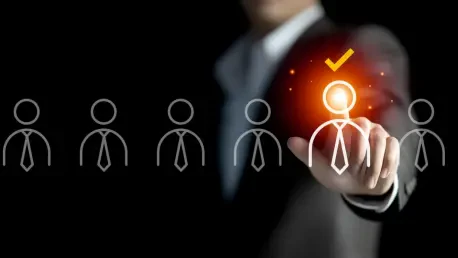In 2025, diversity, equity, and inclusion (DEI) initiatives face unprecedented challenges as corporate landscapes grapple with executive orders reshaping traditional employment practices. Recent mandates from former President Donald Trump have thrust DEI strategies under the microscope, prompting human resources (HR) professionals to reassess their methods to ensure compliance while fostering a welcoming workplace. These changes highlight the complexity involved in balancing regulatory demands with genuine inclusivity. At the heart of this transformation lies confusion between DEI aims and affirmative action policies—a combination that could jeopardize organizational efforts.
Understanding DEI and Affirmative Action Distinctions
Deconstructing the Blurred Lines
The conflation of DEI initiatives with affirmative action policies has generated confusion within organizations. While DEI is intended to promote equitable representation and opportunities across diverse workforces, affirmative action often involves structured measures, such as quotas. Chris Gantt-Sorenson, an expert in employment law, underscores the dilemma for organizations navigating former President Trump’s executive order, which targets programs resembling affirmative action. This order places HR professionals in a precarious position, as they must differentiate between DEI and affirmative action to avoid risking the appearance of non-compliance, especially since affirmative action is often perceived negatively under the current executive edicts.
The ambiguity surrounding DEI and affirmative action necessitates a careful recalibration of strategies. Organizations must discern the essence of their diversity programs, ensuring they align with current laws while preserving the spirit of inclusivity. Federal contractors are particularly affected, with strict guidelines to revise their policies by removing references that may imply affirmative action frameworks. These modifications seek to prevent jeopardizing contracts tied to compliance, compelling HR departments to adopt nuanced approaches for communicating commitments to equal opportunity.
Navigating Legal Complexities
The U.S. Equal Employment Opportunity Commission (EEOC) and the Department of Justice have further complicated the DEI landscape with a technical assistance document issued in March. This document states that employment programs providing advantages to individuals from protected classes, typically minorities, may be deemed illegal. Historically, such programs were deemed crucial for fostering workplaces reflecting societal diversity. Current guidance, however, challenges HR professionals, emphasizing that DEI initiatives must not preferentially treat any protected class. This perspective adds another layer to the challenges HR leaders face as they work to cultivate diverse work environments.
This shift in legal interpretation prompts HR departments to reevaluate their traditional approaches to employee resource groups and DEI training sessions. These initiatives, prevalent tools for promoting awareness and supporting underrepresented groups, now require thorough scrutiny to avoid potential legal pitfalls. For instance, events like ‘lady lawyer lunches’ that were once standard practice now necessitate a reconsideration of legal compliance, impacting how these programs are perceived. Adjusting strategies to align with present legal standards ensures these initiatives remain both impactful and compliant.
Assessing Impact on HR Initiatives
Reevaluating Training Protocols
The evolving legal framework mandates a critical review of training protocols integral to DEI efforts. Traditionally, Title VII training focused on illegal discrimination and was considered essential. However, educational content inadvertently highlighting racial or gender disparities faces potential elimination, complicating instructional design. This shift demands a pivot towards training that engages all participants without alienation, maintaining an inclusive dialogue while preserving its educational purpose. Achieving this balance is pivotal for HR professionals intent on fulfilling DEI objectives within legal confines.
As organizations revise their training programs, the emphasis should be on fostering dialogues that celebrate inclusivity in a genuine manner. This approach requires creative communication strategies capable of embracing diversity as an asset. Notably, diversity encompasses dimensions beyond conventional race or gender boundaries, including educational backgrounds and geographical diversity. A homogenous workforce, often prone to stagnation, stands to benefit from innovative thinking spurred by varied perspectives. Thus, HR professionals must devise nuanced training solutions resonating with organizational values while adhering to legal mandates.
The Role of Employee Resource Groups
Employee resource groups have historically functioned as essential community-building tools within organizations. With the revised legal landscape, HR professionals must reassess the structure and goals of these groups, ensuring they align with current guidelines while retaining their essence. Resource groups geared towards underrepresented demographics must navigate the complexities of legislation without compromising their mission. This reevaluation involves crafting initiatives that resonate industry-wide, illustrating the importance of creative adaptations in sustaining these groups against legal challenges.
Organizations should strive to maintain employee resource groups as vibrant centers for dialogue, support, and empowerment. Ensuring resource groups continue to function effectively requires strategic planning to abide by legal constraints. Ultimately, these groups are instrumental in advancing DEI, enabling exchanges enriching employee experiences. By adopting innovative approaches, resource groups can continue championing their roles as vital contributors to an inclusive corporate environment, reinforcing the status of DEI as a priority amidst regulatory restrictions.
Adopting Strategic DEI Approaches
Fostering Innovative Inclusion
In the wake of regulatory upheavals, there is a renewed emphasis on the significance of DEI as a cornerstone of workplace innovation and sustainability. DEI strategies must evolve by appreciating the varied dimensions of diversity, extending beyond conventional race and gender classifications to include educational backgrounds and geographic origin. This expansion necessitates the adoption of diverse frameworks fostering creative thinking, ultimately benefiting corporate growth and adaptability. Exploring these avenues presents opportunities for HR leaders to cultivate environments rich in varied perspectives while adhering to current legal standards.
While legal realities impose new challenges, organizations committed to DEI can devise strategies aligning inclusion with innovation. Emphasizing diversity as a catalyst for change drives organizations toward sustainable practices and enhances adaptability within altering landscapes. Viewing differences as assets rather than hurdles shifts corporate mindsets toward a more genuine embrace of DEI. Implementing strategic adaptations reflecting these values ensures corporate entities continue to thrive amidst changing regulatory paradigms without compromising their commitment to diversity.
Creating Environments for Sustainable Growth
To maintain momentum in corporate DEI initiatives, fostering a commitment to sustainability is imperative. Building environments that prioritize diversity and innovation helps organizations adapt to evolving challenges while harnessing the benefits of varied perspectives. A truly inclusive workspace not only reflects a varied workforce but also adapts to new situations with agility and insight. To achieve this, HR leaders are encouraged to innovate, exploring diverse ways to ensure compliance while sustaining an enriching workplace atmosphere benefitting both employees and broader organizational goals.
The interaction between diversity and growth underscores the importance of viewing DEI as an ongoing commitment to progress and innovation. As organizations navigate legal complexities, maintaining a dedication to inclusive practices is essential. This approach requires embracing regulatory constraints as opportunities for introspection and growth, crafting policies reinforcing DEI goals. Through these efforts, organizations can expect to enjoy sustainable development guided by the principles of diversity, leveraging differences as assets promoting corporate prosperity.
Moving Forward with DEI in Corporate Strategy
In 2025, initiatives in diversity, equity, and inclusion (DEI) encounter substantial challenges as businesses navigate executive orders that reshape traditional employment procedures. Recent directives from former President Donald Trump have placed DEI strategies into sharp focus, urging HR professionals to reassess their approaches to maintain compliance while also promoting an inclusive work environment. These shifts underscore the complicated nature of aligning regulatory requirements with authentic inclusivity practices within the workplace. Central to this transition is the confusion between DEI objectives and affirmative action policies, which intertwines the two in a way that could potentially undermine organizational efforts. HR teams must carefully differentiate between fostering a diverse workplace and meeting affirmative action mandates to avoid compromising DEI goals. Balancing these demands requires a nuanced understanding of both legal obligations and the need to cultivate an environment where diversity thrives genuinely and ethically.









